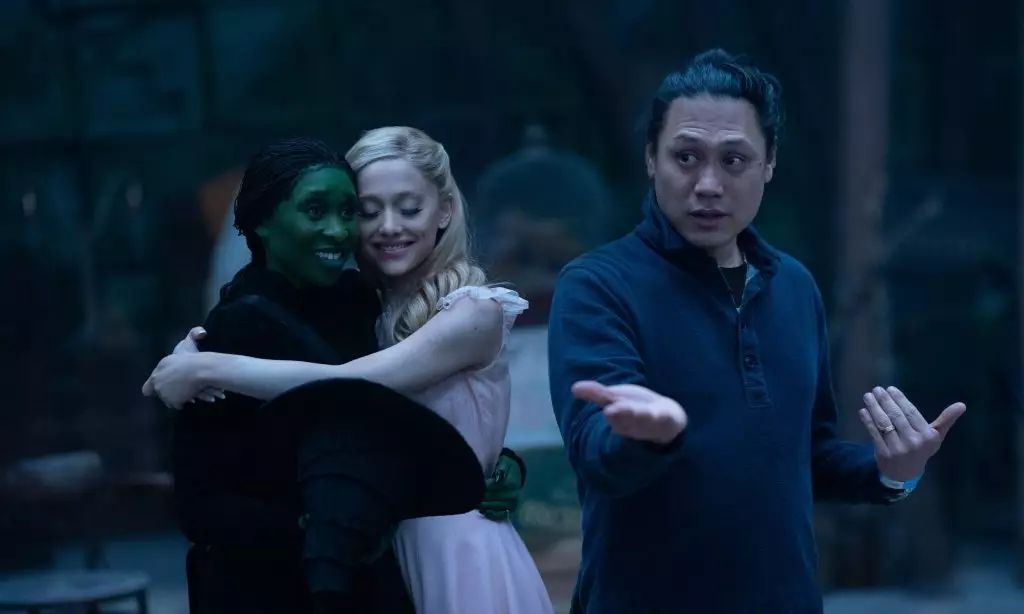The world of cinema has often revolved around the illusions created through color, lighting, and visual storytelling. The much-anticipated film adaptation of the musical “Wicked,” directed by Jon M. Chu, has sparked a passionate debate surrounding its visual aesthetic, particularly in comparison to the iconic 1939 classic, “The Wizard of Oz.” As audience expectations are shaped by nostalgia, Chu’s approach was to create a distinct cinematic experience that immerses viewers in a realistic rendition of Oz, rather than relying on the technicolor glory of its predecessor.
In a recent interview with The Globe and Mail, Chu addressed concerns regarding the film’s perceived desaturation and muted palette. He elaborated on how his intention was not to replicate the visual splendor of past adaptations but to infuse reality into the fantastical world of Oz. “The colors are there, but we wanted to make it feel like a place you could actually inhabit. It had to feel tangible to create the authenticity needed for the characters’ relationships,” Chu explained. This perspective gives us an insight into how he sought to subvert expectations by creating a more grounded portrayal of both characters and their environment.
Moreover, Chu articulated a desire to showcase the physicality of the world. He emphasized that if the setting appeared too artificial or glossy, it could detract from the emotional stakes faced by the protagonists, Elphaba and Glinda. Such a decision reflects a broader trend in contemporary filmmaking, where there is an increasing preference for organic textures over the glossiness of digital effects.
The creative decisions behind “Wicked” have ignited divided opinions among audiences and critics. Some viewers have lamented the film’s use of what they described as “drab” coloring, perceiving it as a departure from the vibrant palette that has come to define the Oz narrative. Additionally, discussions on social media platforms, particularly X, reveal a spectrum of opinions ranging from admiration for the film’s unique aesthetic to outright discontent with its subdued visuals.
Proponents of Chu’s artistic vision, however, argue that the muted tones serve a greater narrative purpose. They suggest that a more mature color grading allows for deeper emotional resonance, providing viewers with a fresh way of engaging with characters traditionally depicted in a lighter, more whimsical hue. This polarization underscores the complexities of audience expectations and the challenge filmmakers face in innovating while paying homage to beloved classics.
One of the striking elements of “Wicked” lies in how color influences character development and relationships. Chu pointed out that the changing colors throughout the movie parallel the growth in Elphaba and Glinda’s storylines. As viewers connect more intimately with the land itself, the characters’ relationships evolve alongside their vibrant and darkening circumstances.
The choice of lighting as a character-building tool is a strategic one, accentuating the dichotomy between the protagonists and their journeys. This intricate weaving of visual storytelling, where even the landscape is imbued with narrative significance, reveals the depth of Chu’s vision. The further exploration of these characters and their entanglements with the land suggests a maturity that aligns with modern storytelling.
Despite the divisive discussions surrounding its color palette, “Wicked” has soared at the box office, shattering records and proving that audience demand transcends visual aesthetics alone. With an impressive opening weekend gross of $205 million, the film became a defining moment not just for Chu, but also for leading stars Ariana Grande and Cynthia Erivo. Its commercial success highlights how compelling storytelling can often outshine aesthetic critiques.
As audiences flocked to theaters, the cultural significance of the film became evident. “Wicked” doesn’t merely adapt a musical; it reinvents a narrative through its characters’ emotional arcs while inviting viewers to consider their relationships with the worlds they inhabit. This duality between nostalgia and innovation is a challenging balance for filmmakers, but it is precisely this tension that keeps cinematic conversations alive and dynamic.
Jon M. Chu’s “Wicked” serves as a reminder that cinema is an evolving medium. While discussions around its aesthetic choices may provoke passionate debates, what ultimately sustains a film is its ability to resonate with audiences on emotional and narrative levels. As it stands, “Wicked” offers a fresh lens through which to experience both the familiar and the unknown, challenging viewers to appreciate the intricacies of storytelling in a vibrant yet realistic world.

Leave a Reply